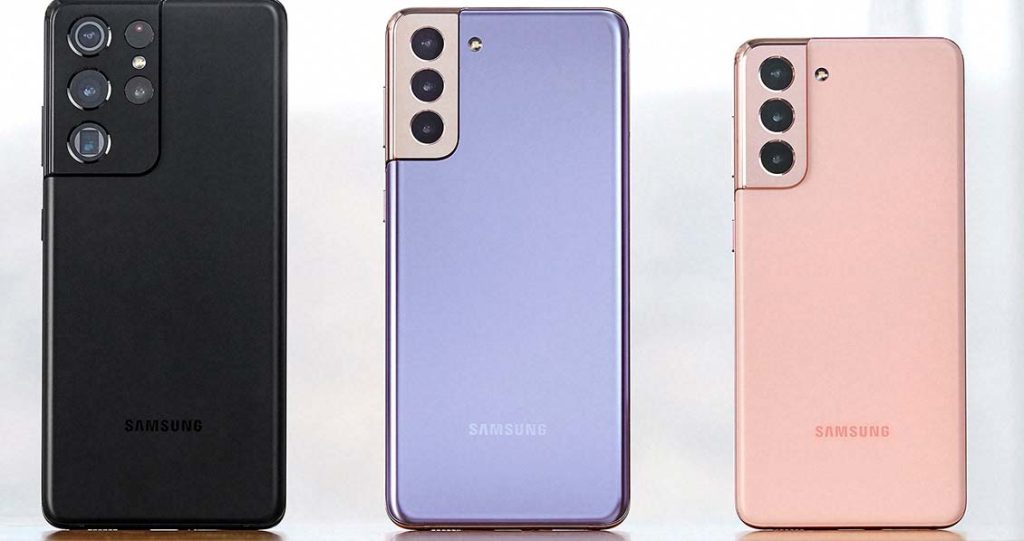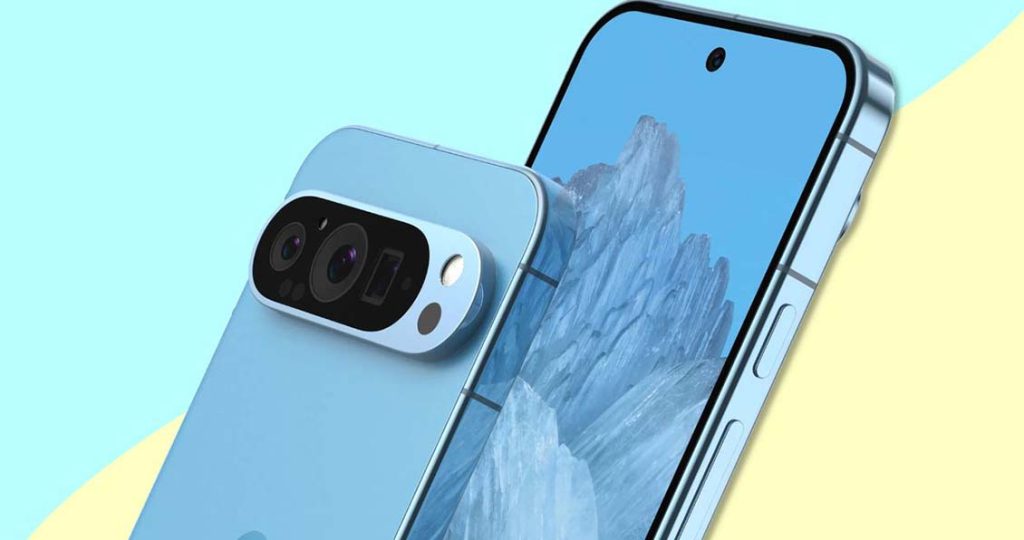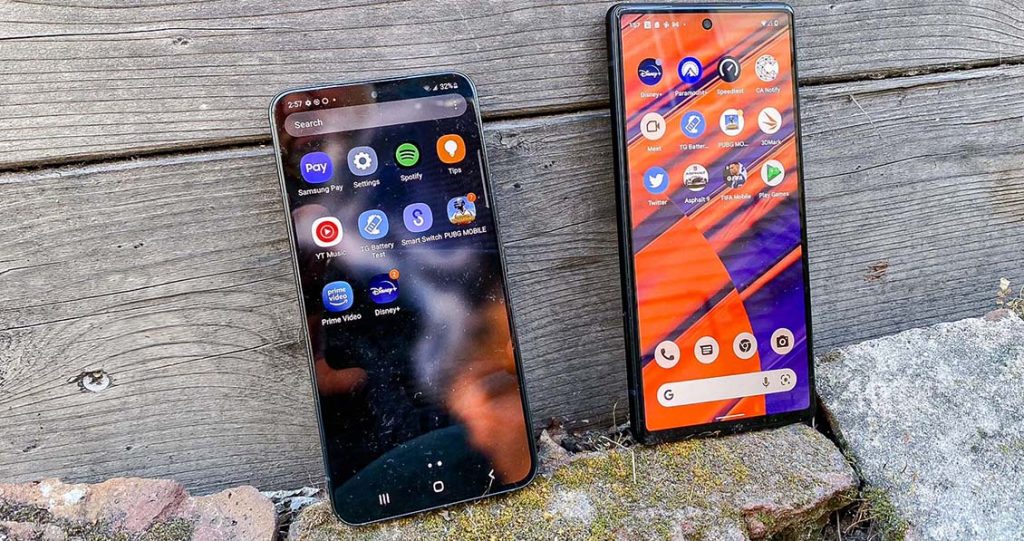In the world of Android smartphones, two names often stand out when it comes to flagship devices: Samsung Galaxy S Series and Google Pixel. Both have their loyal fan bases, and both offer exceptional performance, design, and features. But how do they compare, and which one might be the better choice for you?
1. Design and Build Quality
Samsung Galaxy S Series
The Samsung Galaxy S Series is known for its premium design, with a focus on sleek, modern aesthetics and cutting-edge materials. The latest iterations, like the Galaxy S23 Ultra, showcase a blend of glass and metal, with curved edges and a nearly bezel-less display that offers an immersive experience. Samsung has refined its design language over the years, making the Galaxy S Series a symbol of luxury and sophistication in the smartphone world.
The build quality of the Galaxy S Series is exceptional. The phones are robust, featuring Gorilla Glass Victus protection on both the front and back, and an IP68 rating for water and dust resistance. Samsung also offers a wide range of colors and finishes, allowing users to choose a device that matches their style.
Google Pixel
The Google Pixel series, in contrast, takes a more minimalist approach to design. The Pixel phones are often praised for their clean, functional design, which focuses on simplicity rather than flashiness. The latest Pixel models, like the Pixel 7 Pro, feature a matte glass back with a distinctive camera bar that gives the device a unique look. While the design may not be as eye-catching as Samsung’s, it appeals to users who appreciate a more understated, practical aesthetic.
Build quality is solid, with the Pixel devices also offering Gorilla Glass protection and IP68 water and dust resistance. However, Google’s design language is more utilitarian, with a focus on function over form. The Pixel phones are also generally lighter and slightly smaller, making them more comfortable to hold and use with one hand.
Verdict: If you prefer a sleek, luxurious design with cutting-edge materials, the Samsung Galaxy S Series is the winner. However, if you value simplicity and practicality, the Google Pixel series might be more appealing.

2. Display Quality
Samsung Galaxy S Series
Samsung is renowned for its displays, and the Galaxy S Series is no exception. The latest Galaxy S23 Ultra features a 6.8-inch Dynamic AMOLED 2X display with a resolution of 3200 x 1440 pixels and a 120Hz refresh rate. This display is simply stunning, offering vibrant colors, deep blacks, and incredible brightness that makes it easily viewable even in direct sunlight. Samsung’s displays also support HDR10+, providing an enhanced viewing experience for movies and games.
One of the standout features of Samsung displays is their adaptability. The refresh rate can dynamically adjust between 1Hz and 120Hz, depending on the content, which helps to conserve battery life without compromising on smoothness.
Google Pixel
Google’s Pixel series also boasts impressive displays, but with a slightly different focus. The Pixel 7 Pro, for example, features a 6.7-inch OLED display with a resolution of 3120 x 1440 pixels and a 120Hz refresh rate. While it doesn’t quite match the sheer vibrancy of Samsung’s AMOLED panels, the Pixel’s display is more color-accurate, which might appeal to photographers and videographers who need precise color representation.
The Pixel’s display is also HDR10+ compatible, ensuring a great experience for media consumption. However, where Samsung’s displays excel in brightness and saturation, the Pixel’s strength lies in its natural color reproduction and slightly warmer tones.
Verdict: Samsung’s Galaxy S Series has the edge if you’re looking for the absolute best in display technology with vibrant colors and extreme brightness. However, if color accuracy is more important to you, the Google Pixel series may be a better fit.
3. Camera Performance
Samsung Galaxy S Series
Samsung has consistently pushed the boundaries of smartphone photography with its Galaxy S Series. The Galaxy S23 Ultra is equipped with a quad-camera setup that includes a 200MP main sensor, a 12MP ultra-wide lens, and two telephoto lenses (10MP each) offering 3x and 10x optical zoom. This setup makes the Galaxy S23 Ultra incredibly versatile, capable of capturing everything from ultra-wide landscapes to highly detailed close-ups.
Samsung’s image processing tends to enhance colors and contrast, resulting in photos that are vivid and visually striking, though sometimes a bit over-processed. The low-light performance is also excellent, with the Galaxy S Series utilizing large sensors and advanced night modes to capture bright and detailed images even in challenging conditions.
Google Pixel
The Google Pixel series, on the other hand, has built its reputation on computational photography. The Pixel 7 Pro features a triple-camera setup, including a 50MP main sensor, a 12MP ultra-wide lens, and a 48MP telephoto lens with 5x optical zoom. While the hardware may not be as impressive on paper as Samsung’s, Google’s software processing is where the Pixel shines.
Google’s image processing algorithms produce stunningly accurate photos with excellent dynamic range, natural colors, and sharp details. The Pixel’s Night Sight mode is particularly impressive, often outperforming competitors in low-light conditions. Portrait mode and Super Res Zoom are other standout features, offering impressive bokeh effects and high-quality zoom without the need for multiple lenses.
Verdict: If you want a versatile camera with a variety of lenses and features, the Samsung Galaxy S Series is the better choice. However, for those who prioritize image quality and natural-looking photos, especially in low light, the Google Pixel series is hard to beat.

4. Software Experience
Samsung Galaxy S Series
Samsung’s Galaxy S Series runs on One UI, a custom skin layered on top of Android. One UI is feature-rich, offering a wide range of customization options, multitasking features, and Samsung-exclusive apps like Samsung Pay, Samsung Health, and Bixby. The interface is designed to be user-friendly, with large icons and a clean layout, though some users might find it a bit overwhelming due to the sheer number of features.
Samsung is also committed to providing regular software updates, though they tend to arrive a bit later than Google’s, given the additional time needed to tailor the updates to One UI. Samsung has significantly improved its update schedule in recent years, offering up to four years of major Android updates and five years of security patches for its flagship devices.
Google Pixel
The Google Pixel series offers the purest Android experience available. Running on stock Android, the Pixel devices receive updates directly from Google, often on the day they’re released. This ensures that Pixel users always have access to the latest features and security patches.
The stock Android interface is clean, minimalistic, and free of bloatware, making it fast and responsive. Google also integrates exclusive features into the Pixel, such as the Google Assistant enhancements, live transcription, and call screening. The simplicity of the interface appeals to users who prefer a straightforward, no-nonsense experience without the additional layers of customization found on other Android devices.
Verdict: If you value a clean, bloat-free experience with the fastest updates, the Google Pixel series is the clear winner. However, if you prefer more customization options and additional features, Samsung’s One UI on the Galaxy S Series might be more to your liking.
5. Battery Life and Charging
Samsung Galaxy S Series
Battery life is another area where the Galaxy S Series excels. The Galaxy S23 Ultra, for example, comes with a 5,000mAh battery, which easily lasts a full day of heavy use. Samsung’s power management features, combined with the adaptive refresh rate, help conserve battery life when needed. The Galaxy S Series also supports fast charging, with the S23 Ultra capable of 45W wired charging and 15W wireless charging, ensuring that you can quickly top up your battery.
Google Pixel
The Pixel 7 Pro also features a 5,000mAh battery, offering similar longevity to the Galaxy S23 Ultra. Google has optimized the Pixel’s software to maximize battery life, and the device can comfortably last a day of regular use. However, the Pixel’s charging speeds lag behind Samsung’s, with only 30W wired charging and 23W wireless charging. While this is still reasonably fast, it’s not as competitive as Samsung’s offering.
Verdict: Both devices offer strong battery performance, but Samsung’s faster charging speeds give it a slight edge in this category.

6. Pricing and Value
Samsung Galaxy S Series
Samsung’s Galaxy S Series is positioned as a premium product, and its pricing reflects that. The Galaxy S23 Ultra, for instance, starts at around $1,199, with higher prices for models with more storage. While this price point is on par with other flagship devices, it’s a significant investment.
Samsung often offers trade-in deals, carrier promotions, and discounts on accessories, which can help offset the cost. Additionally, Samsung devices tend to hold their value well, which is worth considering if you plan to sell or trade in your phone in the future.
Google Pixel
The Google Pixel series is generally more affordable than Samsung’s flagship offerings. The Pixel 7 Pro, for example, starts at around $899, making it a more accessible option for those who want a high-end smartphone without breaking the bank. Despite the lower price, the Pixel offers a premium experience with top-tier performance, an excellent camera, and fast software updates.
Google also frequently runs promotions, including discounts, bundled offers with other Google products, and trade-in deals.This makes the Pixel series a compelling choice for those seeking high value at a lower cost.
Verdict: For those looking for a premium device at a more affordable price, the Google Pixel series provides excellent value. If you’re willing to invest more for additional features and faster charging, the Samsung Galaxy S Series might be worth the extra cost.
Both the Samsung Galaxy S Series and Google Pixel series offer outstanding flagship experiences, each with its strengths and appeal. The Samsung Galaxy S Series excels in design, display quality, and camera versatility, making it a top choice for users who prioritize luxury, advanced features, and multimedia capabilities. On the other hand, the Google Pixel series shines with its pure Android experience, exceptional computational photography, and excellent value for money.
Choosing between the two ultimately depends on your preferences and priorities. If you’re drawn to cutting-edge design, a vibrant display, and a versatile camera system, the Samsung Galaxy S Series might be your ideal match. If you value a clean software experience, superior image processing, and a more budget-friendly option, the Google Pixel series is likely the better choice.
